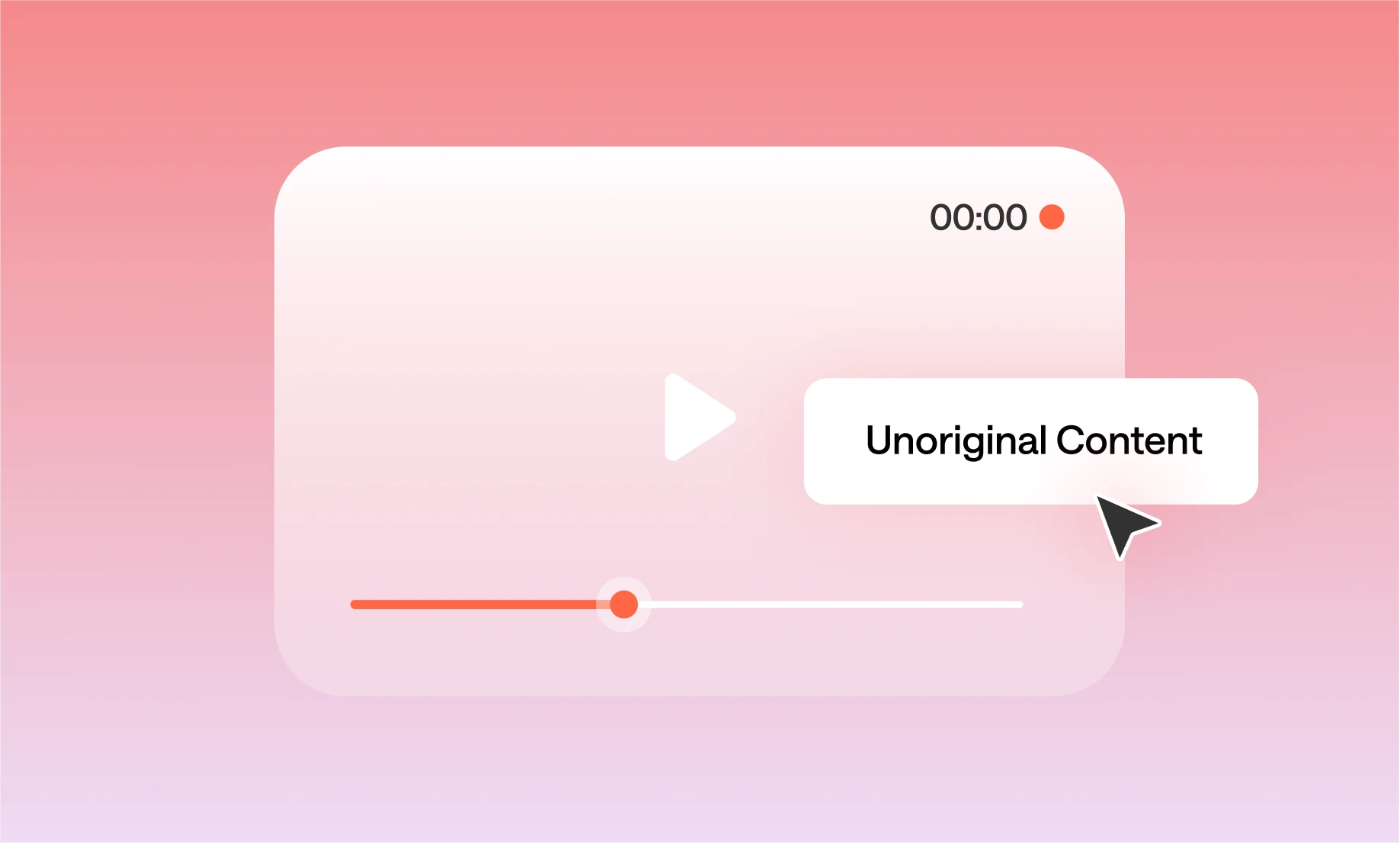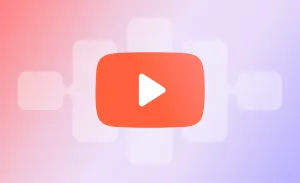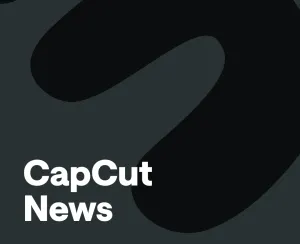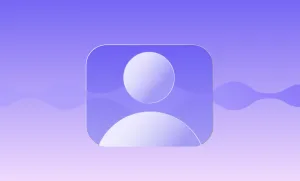YouTube’s drawing a hard line. Starting July 15, creators who rely on reused, repetitive, or low-effort content could lose monetization altogether.
If you’ve been posting reaction videos, AI-generated commentary, or clip compilations, this update affects you, and staying on the platform’s good side is going to take more than a new thumbnail and title.
What’s changing and why it matters:
- YouTube is updating its monetization rules to target “unoriginal” content, including repetitive or mass-produced videos.
- Reaction channels, AI-generated videos, and compilations are most at risk of demonetization.
- Starting July 15, 2025, YouTube will apply stricter criteria to what qualifies as “original and authentic” under the YouTube Partner Program.
- Creators must now add clear value, commentary, or editing to reused content to avoid penalties.
- Failing to meet these standards may lead to full monetization loss, not just video-by-video warnings.
Listen to this article
The Latest Move Against “Unoriginal” Content
YouTube’s monetization guidelines are shifting again, and this time the target is clear: “unoriginal” content. Starting July 15, 2025, creators trying to earn money through the YouTube Partner Program (YPP) will face new scrutiny if their content is mass-produced, repetitive, or lacking in authenticity:
In order to monetize as part of the YouTube Partner Program (YPP), YouTube has always required creators to upload “original” and "authentic" content. On July 15, 2025, YouTube is updating our guidelines to better identify mass-produced and repetitious content. This update better reflects what “inauthentic” content looks like today.
What is Transformative Content?
For years, YouTube has danced around what qualifies as transformative, educational, or meaningful. But with AI content farms churning out soulless rehashes of trending videos and countless shorts featuring someone staring blankly while another creator’s video plays in the background, the pressure to step in has built up. Reddit’s r/Asmongold lit up with reactions: some users celebrated the move, saying it was long overdue, while others called it a veiled effort to squeeze smaller creators and funnel revenue toward YouTube itself.
Some see it as a death knell for lazy reaction channels, others as a legal shield in the wake of lawsuits targeting content reuse. Either way, creators are nervous, and they should be. Because YouTube hasn’t really defined what “unoriginal” looks like in practical terms, making it a bit of a guessing game.
What Does This Mean for YouTubers?
If you’re a YouTuber who’s ever uploaded a reaction video, a commentary segment, or even a compilation, you might be wondering: do I still get to earn a paycheck next month? The answer is: maybe. It depends on how YouTube’s reviewers interpret your work, and that’s where things get tricky.
How long does it take youtube to review a video for monetization?
- YouTube reviewers don’t watch every video start to finish. YouTube has stated publicly that manual reviewers primarily assess a channel’s overall content rather than each individual video, especially when reviewing monetization eligibility for the YouTube Partner Program (YPP).
- They focus on your most-viewed, most recent, and most representative uploads. This is consistent with YouTube’s own support page: they look at your main themes, top videos, newest uploads, and most watch time when reviewing.
- Review times can vary. While many monetization reviews happen within 24–72 hours, some cases (especially edge cases or appeals) can take a week or more, especially if manual review is involved or the channel has complex/repetitive content.
- Decisions are subjective and policy language is often vague. YouTube’s definitions of what qualifies as “original,” “reused,” or “transformative” content are often broad, and enforcement can seem inconsistent, especially for small channels vs large ones.
Who will be affected the most?
Smaller creators are already bracing for impact. While the big names might get a wrist slap or a second chance, lesser-known channels are far more likely to see their monetization privileges revoked with little recourse. That’s the power imbalance users on Reddit keep circling back to. If you’ve built a community, if you’ve grown a following, but your format doesn’t align with YouTube’s moving target definition of authenticity, you could lose everything overnight.
How to make reaction content without getting demonetized
Reaction content isn’t going anywhere, but the way you make it has to change. If you’re not adding enough of your own voice, YouTube’s updated monetization system may decide your videos don’t qualify for revenue.
Here’s how to keep creating reaction content while staying in the clear:
1. Speak up often, and add your own perspective
You can’t just nod silently or point at the screen anymore. If you’re reacting to a clip, pause and comment. Break down what’s happening. Add context, opinions, humor, anything that proves you’re not just riding someone else’s work. You need to make it obvious that your video exists because of your input, not in spite of it.
A great example of reaction content done right is CinnamonToastKen. Everything is broken up regularly, with long discussions, and a lot of transformative elements.
2. Edit in a way that reshapes the experience
It’s not enough to overlay your face on a full-length clip. Use cuts. Zoom in on key moments. Reorder sections if it helps your point. Even better, mix in other sources, like news articles, background footage, or prior clips. The more your edit adds value or recontextualizes the original, the safer you are.
3. Make the original source clear and visible
If you’re using someone else’s work, don’t hide it. Highlight it. Add a link in the description. Mention the creator by name. Let viewers (and YouTube reviewers) know you’re reacting to something, not pretending it’s your own. This kind of transparency can go a long way toward proving good faith.
4. Don’t let the original video dominate the screen
If 90% of your upload is just another person’s video playing in full, you’re going to run into trouble. Try to keep the original content as a supporting piece, not the main event. Shrink the window. Blur it slightly. Focus the viewer’s attention on you and your interpretation of what’s happening.
5. Use overlays, pop-ups, and other visual commentary
Even if you’re talking, you can reinforce your commentary with edits. Add text notes. Use freeze-frames to analyze something mid-moment. Insert graphics that explain what you’re referencing. These layers help prove that your video is transformative in more than one way, and that’s what YouTube wants to see.
6. Credit and, when possible, collaborate
Some creators have started contacting the people they’re reacting to and offering credit, rev‑share, or even co‑produced content. You don’t always need to do this, but when possible, it can protect you and build relationships that lead to better content in the long run.
7. Build a format that revolves around you, not the clip
You shouldn’t rely on any one video to carry your channel. Ideally, your reactions should be part of a larger voice or theme your audience cares about. If someone could watch your upload and leave knowing more about you than the video you reacted to, you’re doing it right.
YouTube’s Monetization Policy: Overview
YouTube’s monetization rules have always been built around a tricky set of values: originality, engagement, and alignment with community guidelines. But what counts as original is often frustratingly murky.
The platform says content should be “created for the enjoyment or education of viewers.” But those are abstract goals, and a lot of creators hit them in weird or unexpected ways. Some channels succeed with elaborate edits and storytelling. Others succeed by reacting to pop culture in a raw, unfiltered way. It’s hard to say one format is more legitimate than the other, until YouTube makes the decision for you.
The bigger issue is that these rules change fast, and usually with limited warning. And enforcement is almost never equal. Channels with big audiences or brand partnerships tend to get more leniency. Smaller creators? Not so much. That’s what makes changes like this one feel risky. Even if you’re following the rules, you might not look like it to someone skimming your channel on a tight deadline.
Most Recent YouTube Monetization Updates
YouTube’s monetization system has gone through a lot over the past five years. And if you’ve been creating for a while, you’ve probably felt that shift.
Besides the latest monetization policy change for unoriginal content, here’s a breakdown of the most important changes, what they were trying to fix, and how they’ve shaped today’s rules.
1. AI-generated content gets a closer look
In 2025, YouTube began pushing harder on content that uses AI, especially when it comes to deepfakes or cloned voices. The pressure to do this ramped up after the U.S. proposed the NO FAKES Act, and YouTube followed by promising to label synthetic content and possibly demonetize videos that mislead audiences or misuse someone’s identity.
This hits the AI commentary and “fake trailer” crowd the hardest, but it also puts new responsibility on all creators to disclose when AI tools are being used in meaningful ways.
2. Shorts monetization becomes formalized
After running the Shorts Fund for about two years, YouTube finally folded Shorts into its monetization program in 2023. Now creators can earn ad revenue from short-form videos, though the share is different: Shorts creators get 45%, compared to the traditional 55% for long-form content. This change also meant that Shorts had to follow stricter rules around originality and reuse, especially with music and meme content.
3. New thresholds for entering the Partner Program
A quiet but meaningful update happened in 2022 when YouTube raised the bar for monetization. Channels used to only need 10,000 lifetime views to apply, but now they must hit 1,000 subscribers and 4,000 valid watch hours within a 12-month window.
That means creators need to build a loyal audience before they can earn anything, and YouTube’s increasingly aggressive rules around originality and quality make that even harder to do if your channel format relies on reusing content.
4. COPPA enforcement changes for kids content
Back in 2020, YouTube enforced major changes to comply with the Children’s Online Privacy Protection Act. Any content made for kids, which could be cartoons, toy reviews, or educational clips, had to be labeled properly, or creators risked demonetization.
These videos also lost key features like comments and notifications, which killed growth for many family-focused channels. Monetization for kids content has never fully bounced back, and creators in this space still face more restrictions than almost any other category.
5. Clickbait titles and deceptive metadata are now penalized
In late 2024, YouTube started experimenting with stricter policies around clickbait, beginning in India and gradually expanding. Titles that mislead viewers or overpromise can now lead to demonetization or even video takedowns. It’s an attempt to clean up the homepage and stop videos that use manipulative tactics to game the algorithm, especially in the news, finance, or health spaces.
What qualifies as “deceptive” is still murky, but it’s part of a growing trend: tighter control of how creators label and package their work.
6. YouTube begins actively fighting adblockers
This one doesn’t directly change who can monetize, but it does affect how much revenue creators earn. Starting around 2023 and escalating through 2024, YouTube began limiting playback for viewers using adblockers. In some cases, videos simply won’t play unless ads are allowed or the viewer subscribes to YouTube Premium.
The reasoning is obvious: more ads watched means more money for YouTube and its creators. But it also reflects how seriously YouTube is taking every possible form of monetization leakage.
7. Transparency about monetized channels gets removed
YouTube used to display which channels were monetized using a special public code embedded in their page. But in 2023, they removed that information completely. Now, viewers (and researchers) have no easy way to know which channels are earning ad revenue, which limits external accountability and gives YouTube more control over who gets paid, and who doesn’t.
So, What’s Next for YouTube?
Here’s the truth: this isn’t going to be the last policy shift. As AI-generated content floods the internet, and as creators look for faster, easier ways to grow channels, platforms like YouTube are going to keep changing the rules in real time. Some changes will protect quality content. Others will protect corporate (and financial) interests. A few will probably do both. But creators are going to have to get smarter about how they work, how they adapt, and how they build trust with their audiences.
If you’re a content creator in 2025, you need more than a format. You need a strategy. That might mean adding commentary to your reactions. It might mean trying long-form analysis, building community-driven series, or exploring new topics that let you bring something personal to the table. It might even mean looking outside of YouTube entirely and building a presence on platforms that don’t keep shifting the goalposts.
But one thing is clear: passive content won’t cut it anymore. You need to show up, speak up, and make your voice count before the algorithm decides you’re not worth listening to.








